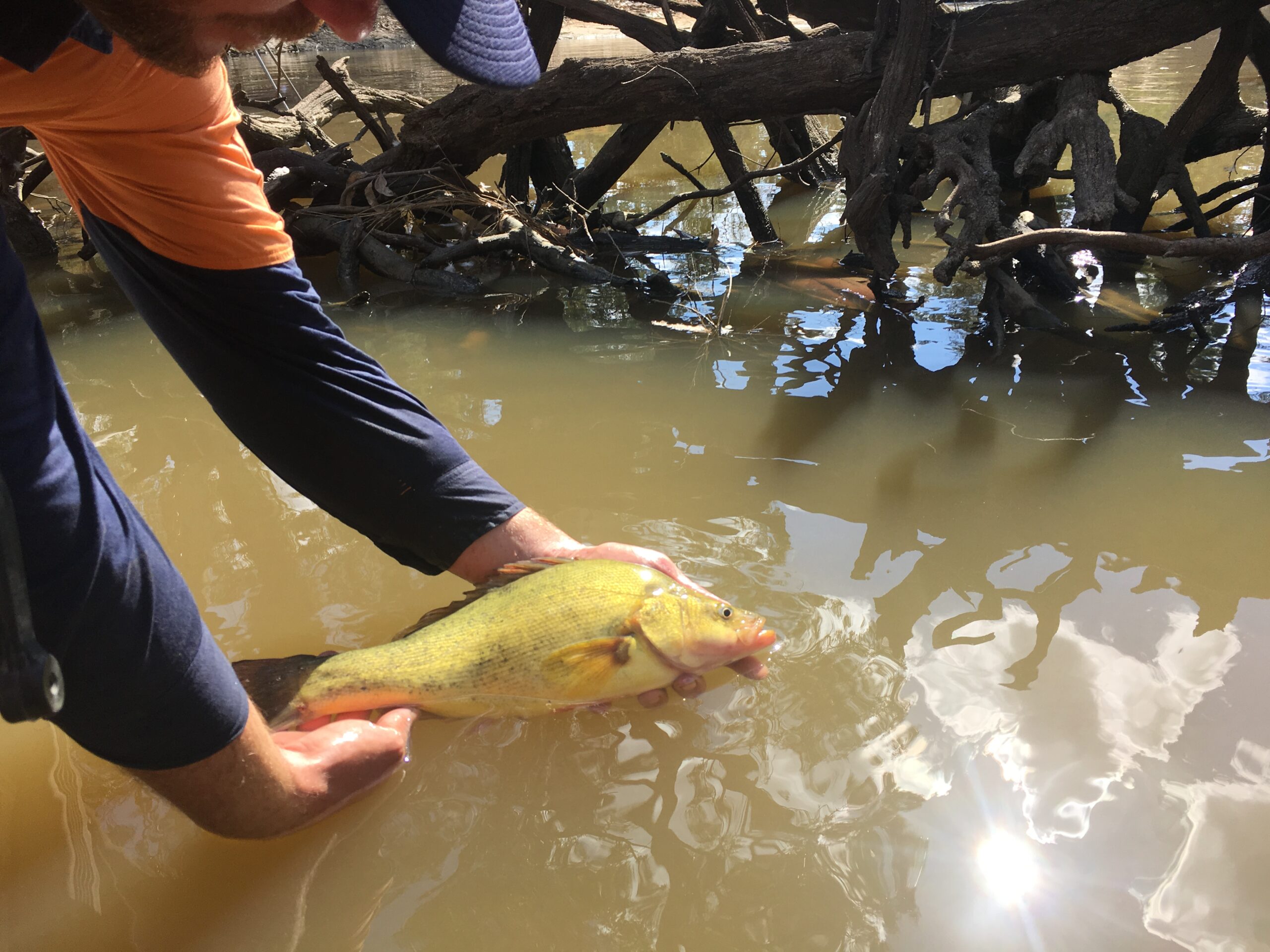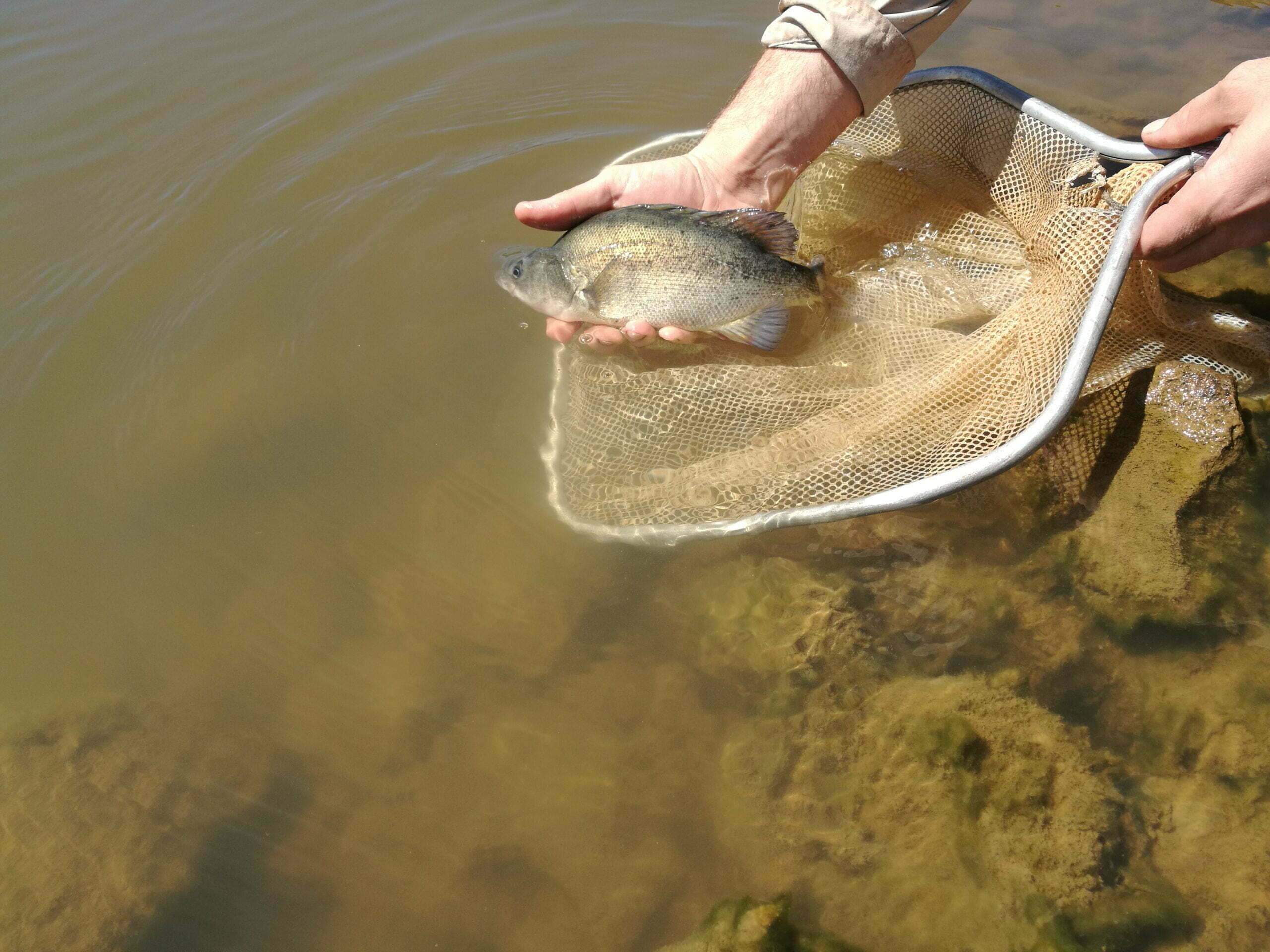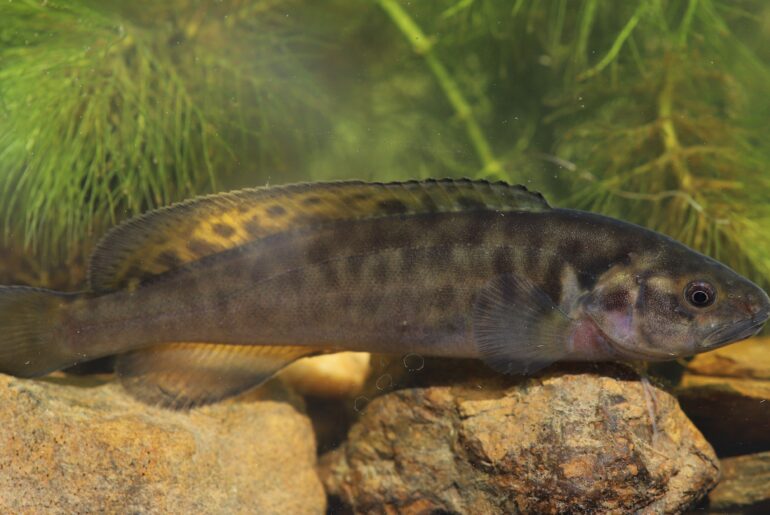Golden perch (Macquaria ambigua) are one of the most desirable species within the Murray-Darling Basin (MDB). They are widely distributed and are a common large native fish in the MDB. The species can grow up to 23kg — however, most are typically less than 5kg. Their potential size makes them a popular fish for many recreational anglers. Golden perch depend on permanent refuge waterholes within ephemeral streams and rivers to survive.
Stream Types
Ephemeral streams only flow in response to weather events such as rainfall or snowmelt.
Intermittent streams only flow during certain parts of the year and are in contact with the water table.
Perennial streams flow year-round and are in direct contact with the water table.
In the ephemeral/intermittent catchments of the Northern MDB, suitable fish habitat contracts significantly during periods of no flow, and in the past, this has been worsened by droughts. The refuge waterholes that golden perch need to survive, are sections of the waterway that persist in times of drought, acting as a safe place for fish populations to wait out the dry season.

Populations of invasive carp have been at problematic levels for years, threatening the wellbeing of native species and the ecosystem more broadly. Image credit: PatternPictures via Pixabay.
A 2022 study investigated the effect that proximity to population centres has on the health of native fish within refuge waterholes. One of the effects that proximity to population centres can bring is an increase in recreational angling. While the study did not specifically measure the frequency and ethics of angling in the area, fishing activity has been shown to be an effective corollary of remoteness (Close et al., 2013), so the impact of proximity to population centres on native fish also gives us some indication of the impact of fishing activity. Legal-sized fish were found to be poorly represented in the length–frequency distributions of near-town waterholes, highlighting their removal by anglers. Angling pressures remain the most likely reason for the smaller fish size observed within waterholes in close proximity to townships.
Refuge waterholes in the northern part of the basin were small, representing as little as 11% of the total river channel network during extreme drought (Marshall et al., 2021). Despite this, small populations of maturing and adult fish can be significant sources for juvenile recruitment during flow periods, when refuge waterholes are reconnected (Balcombe et al., 2006).
Recent studies demonstrated that spawning events in the northern MDB contribute significantly to golden perch recruitment further downstream in the lower Darling River and Murray River (Stuart and Sharpe, 2020). The state of populations in these refuge waterholes is therefore vital for broader recruitment throughout the MDB.

Results
The study found that the continual harvesting from angling has strong potential to significantly affect golden perch biomass and size structure. The findings show that the remoteness of golden perch populations was significantly correlated with median length, biomass, and proportion of legal-sized fish; however, fish density was not related. These results are perhaps unsurprising given the popularity of golden perch as an angling fish within inland angling communities, as well as the lack of other angling target species in these catchments.
When compared with other, better-connected waterways, golden perch in the northern MDB refuge waterholes are more susceptible to overfishing pressures at a local level.
Implications and Further Study
The use of waterhole remoteness as a tool for predicting the characteristics of golden perch subpopulations may have wider application in future studies. Additionally, the findings of subpopulation-level impacts in refuge waterholes may have larger implications for future resilience and management of golden perch.
A developing body of evidence suggests that spawning activity in the northern MDB is a valuable contribution to whole system golden perch recruitment during large flow events. This is due to the drift of eggs and larvae downstream, eventually populating more southern parts of the basin. Stuart and Sharpe (2020) found that golden perch recruits in the lower Darling and lower Murray were spawned hundreds or even thousands of kilometres away in the Macintyre or Weir Rivers, which are near to the Moonie River catchment. Similarly, the Warrego River has been shown to be a productive nursery habitat, responsible for recruitment downstream in the Darling River (Warrego–Darling Monitoring Evaluation Research, 2020).
Angling pressure presents a threat to species resilience, as removal of the larger, more-fecund fish from refuge waterholes may reduce the scale of recruitment when connective flows begin. Therefore, populations of mature golden perch found in refuge waterholes of the northern basin are vital for species persistence in the future.
How can we protect golden perch near towns?
The study suggests that angling pressure in refuge waterholes of the northern MDB is currently limited by remoteness and private land tenure, which may already be protecting perch populations. However, anglers may travel to other waterholes if the abundance of legal-sized fish in their waterholes dwindle. Over time, this may result in a steady geographic spread of angling pressure, impacting the populations of mature golden perch across a wider area.
Education around voluntary catch and release during prolonged droughts may be a way to reduce the impact of angling on mature golden perch. If angling pressures continue to increase within the northern MDB, stronger avenues of protection may need to be considered. This could include the creation of freshwater protected areas, which exclude fishing.
Ultimately, it is important to recognise the impacts of angling in these refuge waterholes on golden perch size and overall species health. If we can help protect golden perch populations in these vulnerable areas, these treasured native fish — and the anglers who so enjoy them — may be preserved for decades to come.

Featured image: A small tagged golden perch prior to release
Photo credit: Scott Raymond




